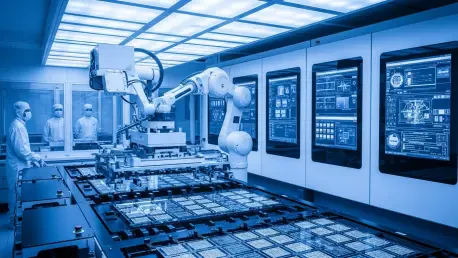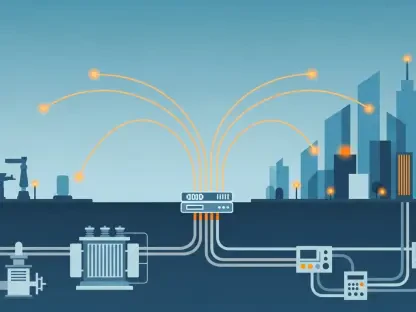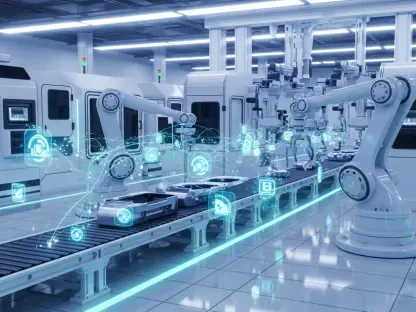I’m thrilled to sit down with Kwame Zaire, a renowned manufacturing expert with a deep focus on electronics, equipment, and production management. Kwame is a thought leader in predictive maintenance, quality, and safety, making him the perfect person to dive into the groundbreaking advancements in AI-driven semiconductor manufacturing. Today, we’ll explore how cutting-edge technology is reshaping the industry, the role of digital innovation in boosting efficiency, and the critical balance between technological progress and sustainability. Let’s get started.
How do you see AI transforming the landscape of semiconductor manufacturing, especially with initiatives like the new AI factory?
AI is revolutionizing semiconductor manufacturing by bringing unprecedented levels of efficiency and precision to the table. With initiatives like the new AI factory, we’re seeing a shift toward intelligent, autonomous systems that can optimize every stage of production. This means faster design cycles, more accurate simulations, and real-time decision-making that cuts down on waste and errors. It’s not just about speed; it’s about creating smarter workflows that can adapt to challenges on the fly, setting a new standard for the industry.
What specific improvements in operational efficiency do you think AI-powered facilities can deliver compared to traditional methods?
AI-powered facilities can dramatically improve operational efficiency by automating complex tasks that used to take days or weeks. For instance, circuit simulation and verification processes are accelerated through high-performance computing, allowing engineers to test and refine designs much faster. Additionally, AI can predict equipment failures before they happen, minimizing downtime. Compared to traditional methods, where human intervention and manual analysis often slow things down, AI streamlines operations, reduces costs, and boosts output without sacrificing quality.
Can you explain the concept of a digital twin and why it’s such a game-changer for modern manufacturing plants?
A digital twin is essentially a virtual replica of a physical factory, updated in real-time with data from the actual plant. It’s a game-changer because it allows manufacturers to simulate operations, plan logistics, and detect issues before they become problems. For example, you can test different production scenarios in the digital environment without risking real-world disruptions. It also helps optimize resource use, which can lower energy consumption and reduce environmental impact. It’s like having a crystal ball that shows you how to run your factory at peak performance.
How do you interpret the idea of an ‘AI industrial revolution’ in the context of manufacturing and beyond?
The ‘AI industrial revolution’ signifies a fundamental shift in how we approach manufacturing and industrial processes. It’s about embedding intelligence into every layer of production, from design to delivery. In manufacturing, this means smarter factories that can self-optimize and innovate with minimal human input. Beyond that, it extends to other industries like automotive or healthcare, where AI can streamline supply chains or personalize production. It’s a new era where machines don’t just follow instructions—they learn, adapt, and drive progress.
What role do high-performance computing tools play in speeding up processes like circuit design and verification in semiconductor production?
High-performance computing tools, like advanced GPUs and specialized software libraries, are critical for handling the massive data and complex calculations involved in circuit design and verification. They can run simulations at incredible speeds, identifying design flaws or performance issues in hours instead of weeks. This cuts down development time significantly and allows for more iterations, leading to better, more reliable chips. It’s like upgrading from a bicycle to a race car—everything moves faster and more efficiently.
How can AI and advanced computing help address the growing concern of energy consumption in data centers and manufacturing?
AI and advanced computing tackle energy consumption by optimizing workloads and improving hardware efficiency. For instance, AI can dynamically adjust power usage during intensive tasks to avoid spikes that strain electrical grids. New platforms are designed with energy storage and management tools to balance demand. On top of that, combining GPUs with CPUs for accelerated computing can perform tasks with far less energy than traditional systems. It’s about working smarter, not harder, to keep energy use in check while still pushing the boundaries of performance.
In what ways do you think long-term collaborations between tech giants influence innovation in the semiconductor space?
Long-term collaborations are a driving force behind innovation in the semiconductor space because they build trust, align goals, and pool resources. When companies work together over decades, they develop a shared understanding of challenges and opportunities, leading to breakthroughs that might not happen in isolation. These partnerships often result in integrated solutions—like combining hardware and software expertise—that push the industry forward. They also create a competitive edge by setting standards that others have to catch up to.
What is your forecast for the future of AI in manufacturing over the next decade?
I believe the next decade will see AI become the backbone of manufacturing, not just in semiconductors but across all sectors. We’ll likely see fully autonomous factories where AI handles everything from design to quality control, with minimal human oversight. Energy efficiency will be a major focus, as sustainability becomes non-negotiable. I also expect AI to democratize innovation, allowing smaller players to compete by leveraging accessible, scalable tools. It’s going to be an exciting time, with AI unlocking potential we’re only beginning to imagine.









